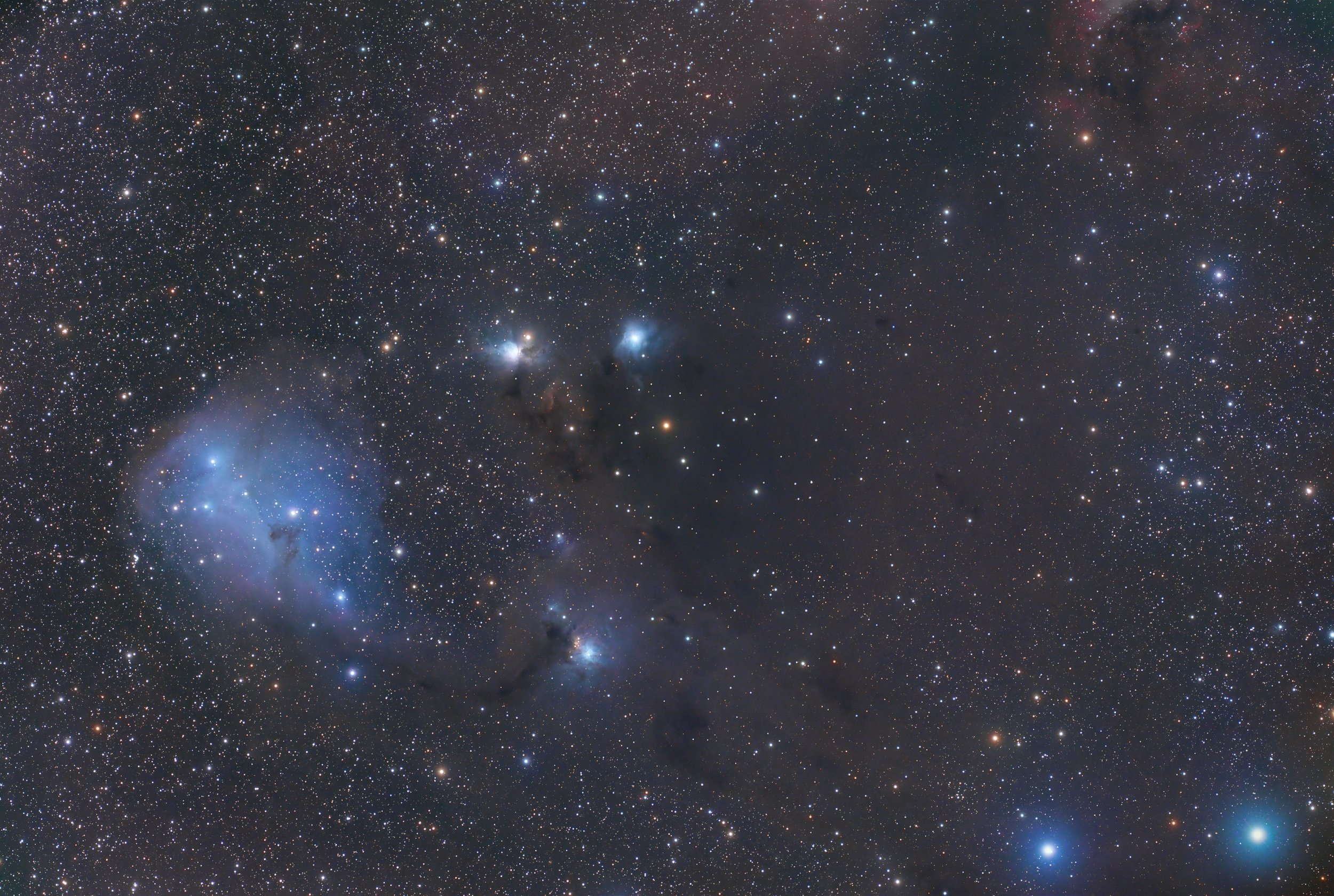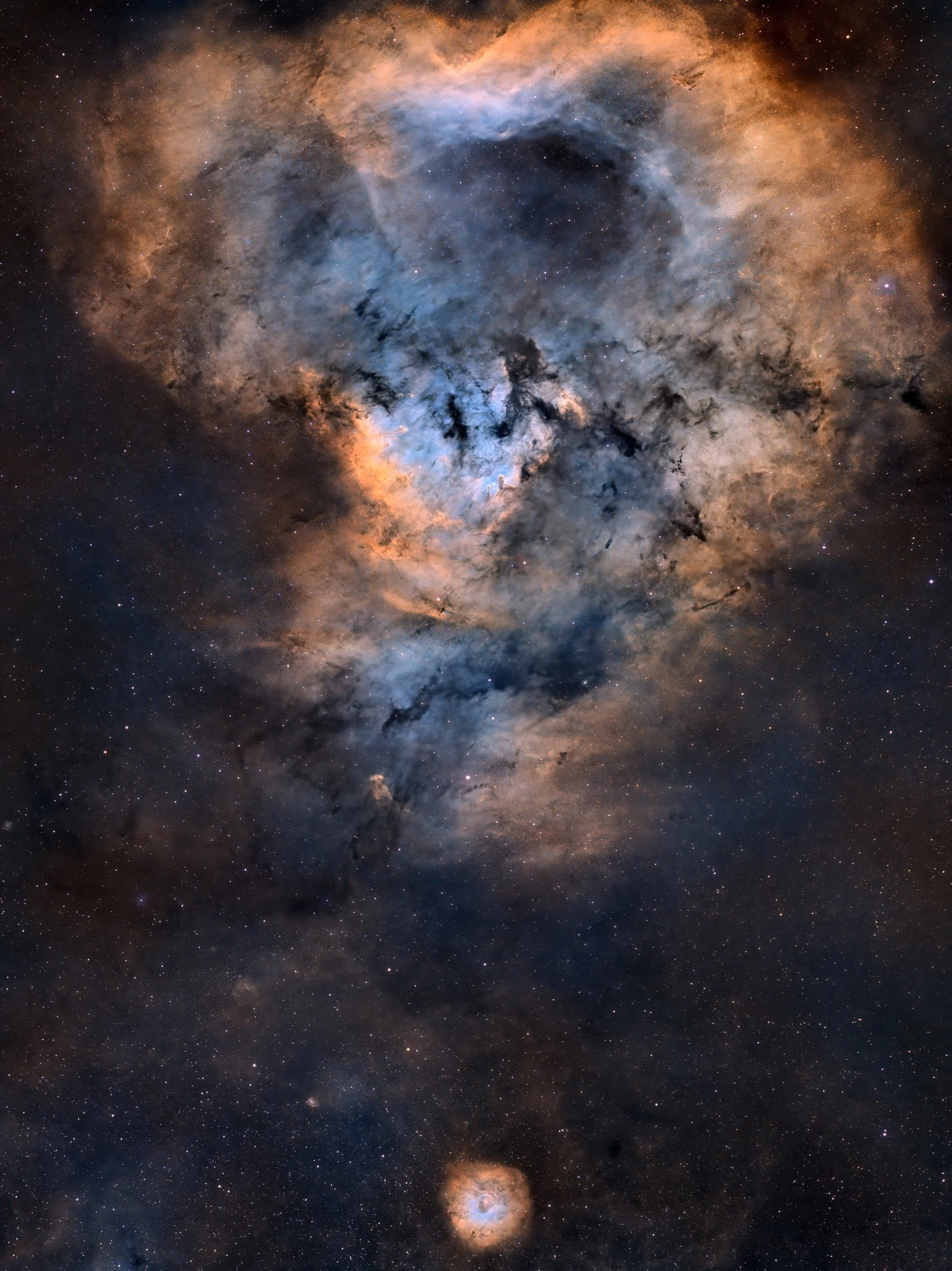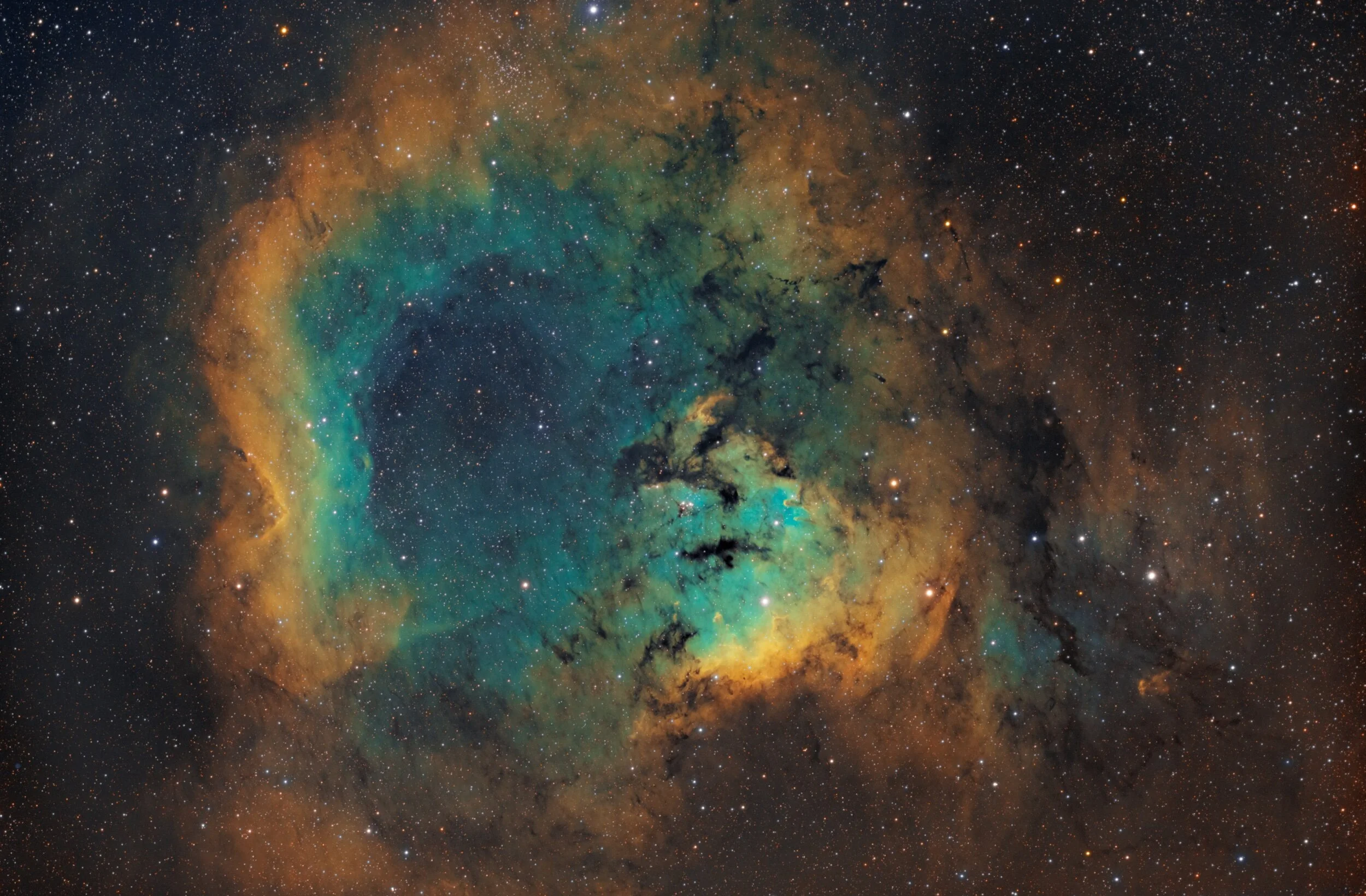
AAPOD2 Image Archives
NGC 7822
NGC 7822, a celestial jewel nestled in the constellation Cepheus, beckons our gaze from a distance of approximately 3,000 light-years away. This stunning emission nebula is a testament to the relentless forces of cosmic creation, where colossal pillars of gas and dust stand as monolithic sentinels, nurturing the birth of new stars within their shadowy embrace. In this mesmerizing image, the photographer has adeptly captured the vibrant tapestry of NGC 7822, where the intense radiation from newborn stars sculpts and illuminates the surrounding nebular clouds, painting the scene with vivid hues of red and blue. This celestial vista serves as a poignant reminder of the intricate interplay between light and darkness in the cosmic theater, where stars are born from the depths of interstellar chaos, offering a glimpse into the ongoing epic of our ever-evolving universe.
The Cosmic Question Mark
Image Description and Details : This is a two panel mosaic revealing a collection of deep-sky objects straddling the border between Cassiopeia and Cepheus. It is sometimes called The Cosmic Question Mark. The large upper section is NGC 7822; and at its bottom is Sh-170 which provides the “dot” of the question mark. Turbulent rings of dust and gases frozen in time like some fossilized explosion, whose atomic emission is powered by energetic radiation from the central hot stars. Their powerful winds and radiation sculpt and erode the denser pillar shapes and clear out a characteristic cavity light-years across the center of the cosmic cloud. Stars continue to be formed in the pillars seen at the core …..
Telescope: Takahashi FSQ 106edx3
Camera: Zwo 2600mm pro
Filters: Antilla 3nm
Mount: Paramount MX
Sii = 45x4m
Ha = 22x4m
Oiii = 34x4m
Total integration = 6h44m per panel
Observatory – RoboScopes, Spain
Copyright: vikas chander
NGC7822
NGC7822, Sh2-171. This is an object that I have been wanting to re capture for several years now. My first complete image with the new William Optics FLT91.Technical cardImaging telescopes or lenses: William Optics FLT91mmImaging cameras: ZWO ASI 294 MM Pro Cooled Mounts: iOptron CEM120Guiding telescopes or lenses: William Optics Guidestar 61mmGuiding cameras: ZWO ASI 120mm mini Focal reducers: William Optics 0.8 reducer/flattnerSoftware: SharpCap Sharcap 3.2.60 · Stark Labs PHD2 · QHYCCD Pole master · Pleaides Astrophoto PixInsight · N.I.N.A.Filters: Astronomik 6nm Ha · Astronomik 6nm OIII · Astronomik 6nm SIIAccessory: AstroZap Dew Heater Straps · Pegasus Astro Ultimate Powerbox V.2 · Moonlite focuser 2.5 inch Focuser with high resolution stepper motor Dates: September 26-28 2021Frames:Astronomik 6nm Ha: 131x180" (gain: 120.00) bin 1x1Astronomik 6nm OIII: 90x180" (gain: 120.00) bin 1x1Astronomik 6nm SII: 103x180" (gain: 120.00) bin 1x1Integration: 16.2 hoursDarks: ~50Flats: ~50Flat darks: ~50Locations: Remote site: Fredonia, Al., Lanett, Alabama, United States
Copyright: Altum spatium Astrophotography
NGC7822 SHO
Image Description and Details :
NGC 7822 is a young star forming complex in the constellation of Cepheus. The complex encompasses the emission region designated Sharpless 171, and the young cluster of stars named Berkeley 59. The complex is believed to be some 800–1000 pc distant, with the younger components aged no more than a few million years. The complex also includes one of the hottest stars discovered within 1 kpc of the Sun, namely BD+66 1673, which is an eclipsing binary system consisting of an O5V that exhibits a surface temperature of nearly 45,000 K and a luminosity about 100,000 times that of the Sun. The star is one of the primary sources illuminating the nebula and shaping the complex's famed pillars of creation-type formations, the elephant trunks.
Détails acquisitions :
HA 105 x 300s
O3 60 x 300s
S2 63 x 300s
soit 19H total
ave la lunette askar400 + red
camera asi264MM
monture ioptron CEM120
Traitement Pixinsight et Photoshop
Copyright: Lamagat Frédéric





